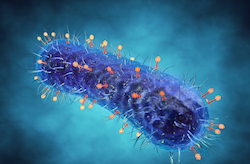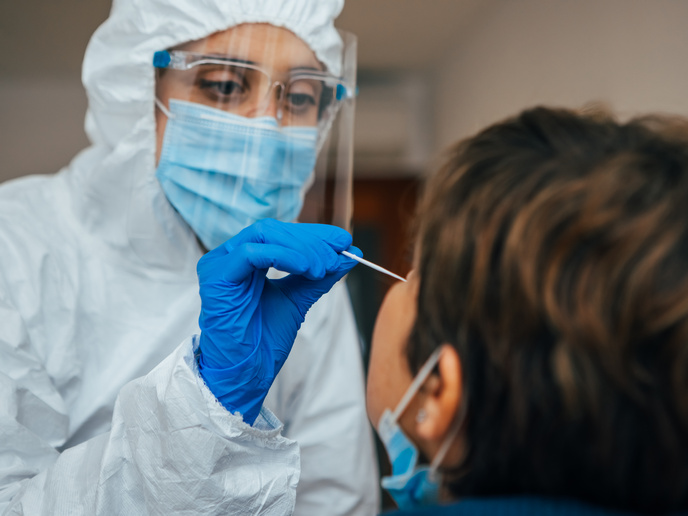Understanding how bacteria defend themselves against viruses could open the way to new treatments of bacterial infections
Bacteria can defend themselves against infection by bacteriophages using an adaptive immune system called CRISPR-Cas. This immune system was only discovered in the last decade, and is present in about half of the bacterial species that we know so far. CRISPR-Cas works through the incorporation of small pieces of DNA (“spacers”), taken from the infecting phage, into a specific spot on the bacterial genome, the so-called CRISPR-locus. As a phage carrying the same sequence would be recognised by CRISPR-Cas and destroyed, this ensures that the bacterium now is immune to that phage through its CRISPR-Cas system. But not much is known concerning how phages co-evolve with this immune system. As lead researcher on the EU-supported PHAGECOM project, Dr Stineke van Houte explains, “The rapid evolution of CRISPR-Cas immunity could be a very real problem of phage therapy, so understanding when CRISPR-Cas immunity primarily evolves and how phages deal with CRISPR-Cas is highly valuable to develop and optimise phage therapies and assess the limitations of these therapies.” A “co-evolutionary arms race” One area in which phages can have financial consequences is the dairy industry where yoghurt-producing bacteria can get infected. Gaining insight into the way the two inter-react could help in the development of strategies to fight off phage infections in the dairy industry, and in the design of better phage therapy to treat bacterial infections in humans. Closer examination revealed a surprise explains Dr van Houte, “Our initial hypothesis was that we would see extensive co-evolution between bacteria and phages. However, the work I carried out during this project showed that bacteria drive phage extinct within a couple of days after the start of the infection, so they don’t co-evolve at all.” Every CRISPR-resistant bacterium in a population has incorporated a different spacer in its CRISPR locus, as described above. This prevents the phage from evolving mutations that would normally allow them to overcome a single spacer, leading to phage extinction. However, anti-CRISPR genes on phage genomes can change this. Anti-CRISPR genes encode small proteins that block CRISPR-Cas systems. This work has shown that phages carrying anti-CRISPRs are unable to overcome CRISPR-Cas when the phages act alone, but when multiple phages work together they can defeat CRISPR-Cas. Unexpected findings These two discoveries were the project’s key findings. “The first finding was unexpected, as based on the knowledge of the molecular interactions between CRISPR-Cas and phage DNA researchers expected bacteria and phage to co-evolve extensively. The second finding is important in my opinion as it gives first insights into the consequences of anti-CRISPRs for their phages and the bacteria they infect,” explains Dr van Houte. Besides protecting against phage infections, CRISPR-Cas can also protect against other genetic parasites, such as plasmids, which are circular pieces of “selfish” DNA that can spread between bacteria. Part of the PHAGECOM project looked into whether CRISPR-Cas systems can remove plasmids from a microbial community. As Dr van Houte explains, this is not only interesting from a fundamental science point of view, but could have important applications. Many of the problems we currently face with drug-resistant bacteria are due to the spread of antimicrobial resistance (AMR) through plasmids that transfer between bacteria. “If we could design a strategy to deliver CRISPR-Cas systems to a microbial community carrying AMR genes, (e.g. in the gut of a patient suffering from recurrent infections with pathogenic bacteria), that could lead the way to new technologies to reduce AMR levels, and thus allow re-sensitisation to antibiotics.” The findings from the project help researchers to understand how phages interact with CRISPR-resistant bacterial hosts. “This is important for various applications, but one that stands out is phage therapy – more and more people realise that phages can be an extremely powerful way of controlling bacterial infections, particularly where antibiotics are no longer useful,” says Dr Stineke van Houte.







